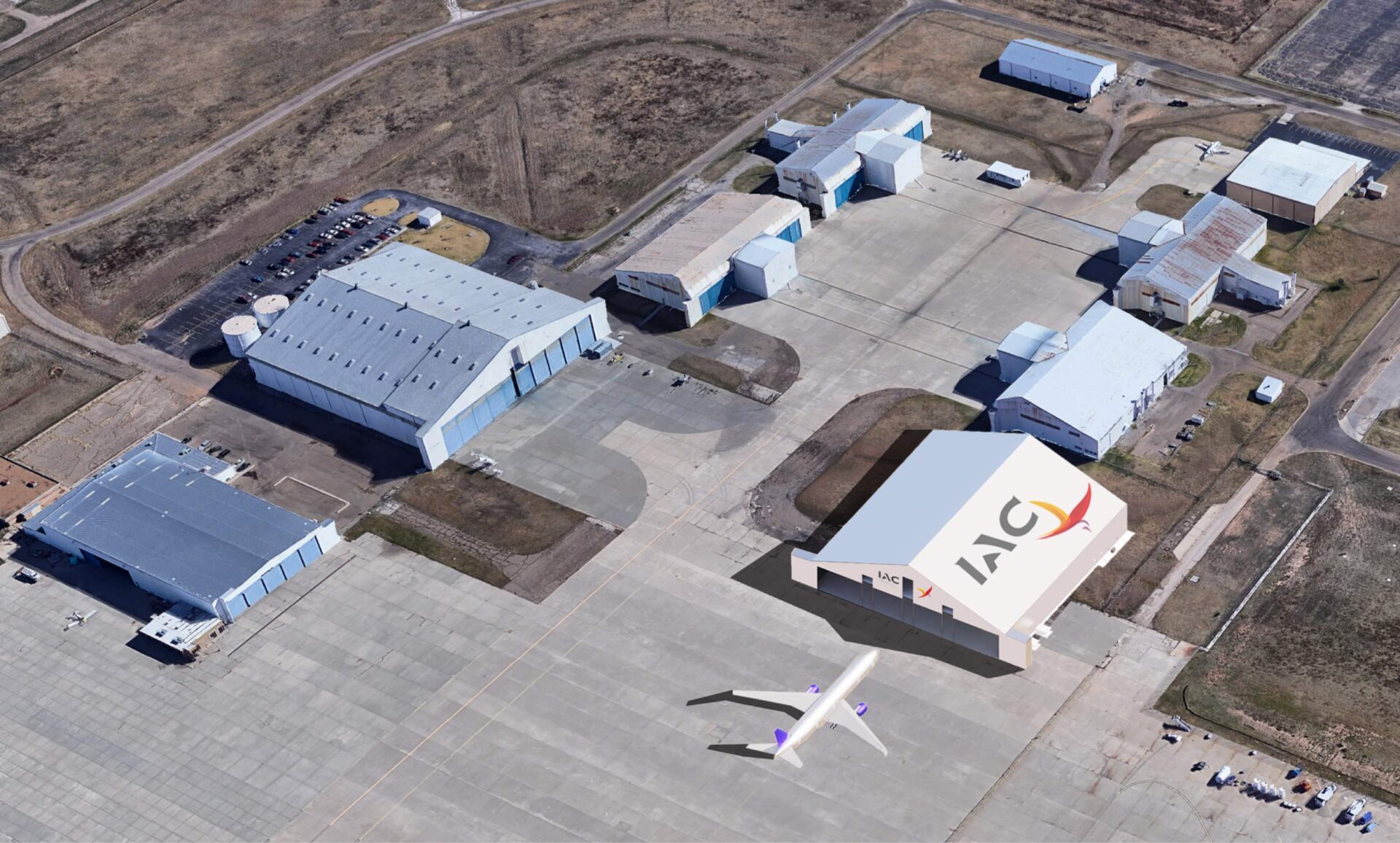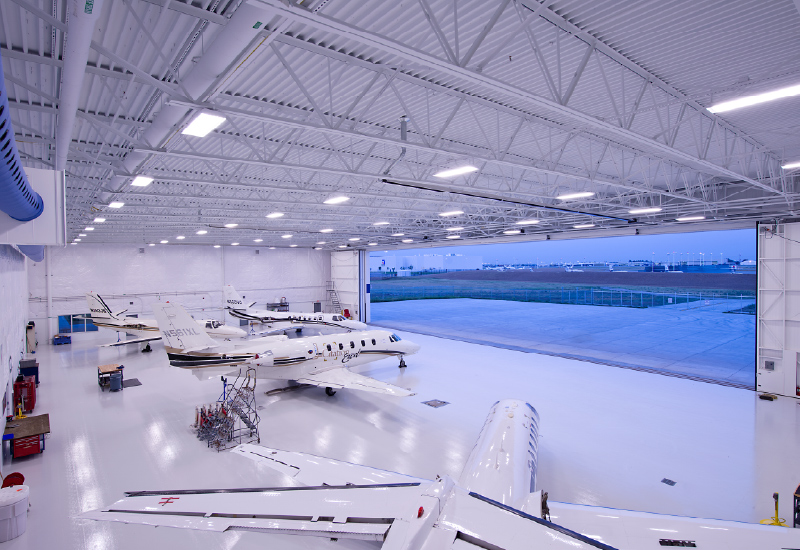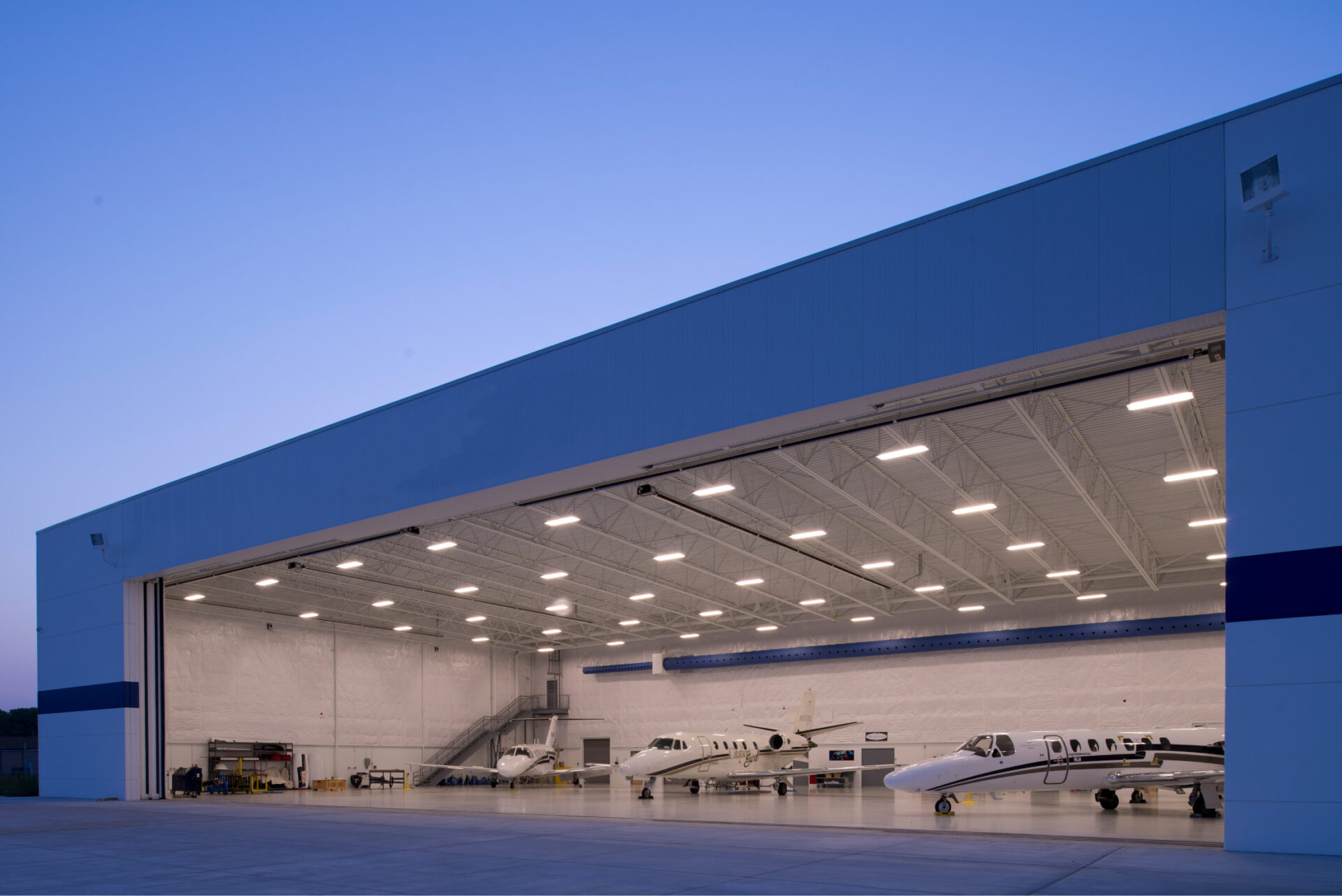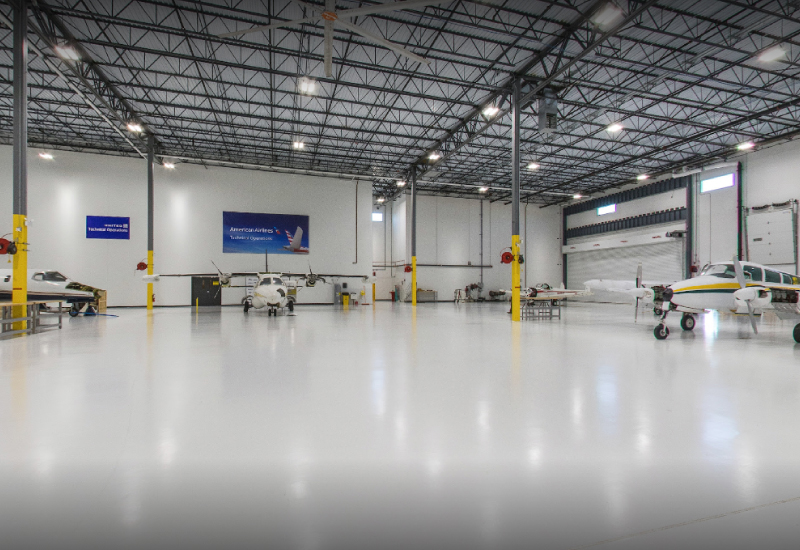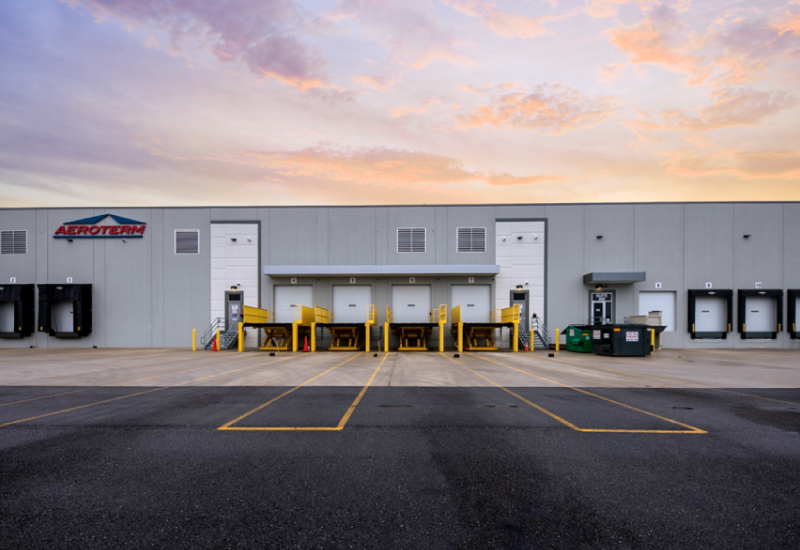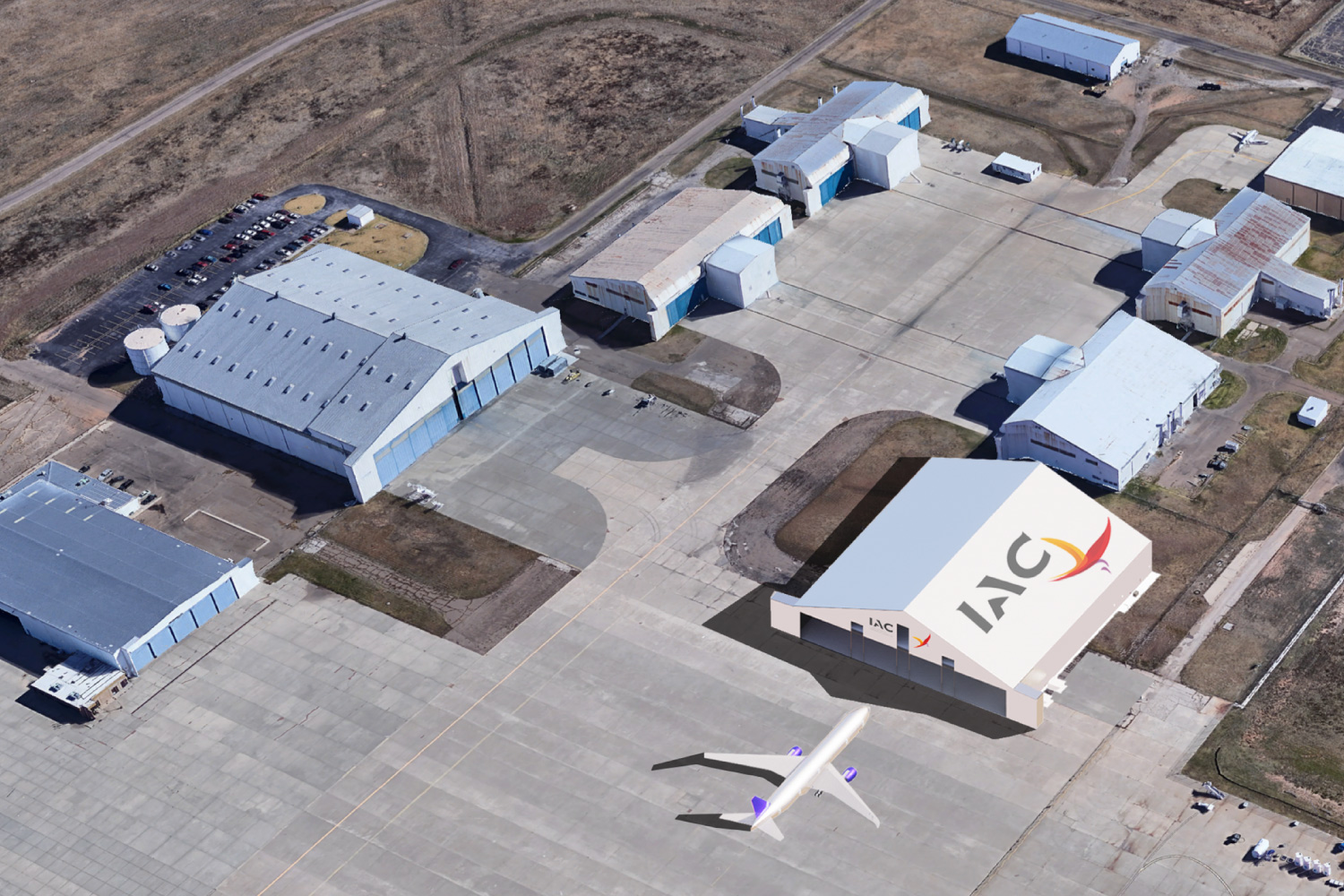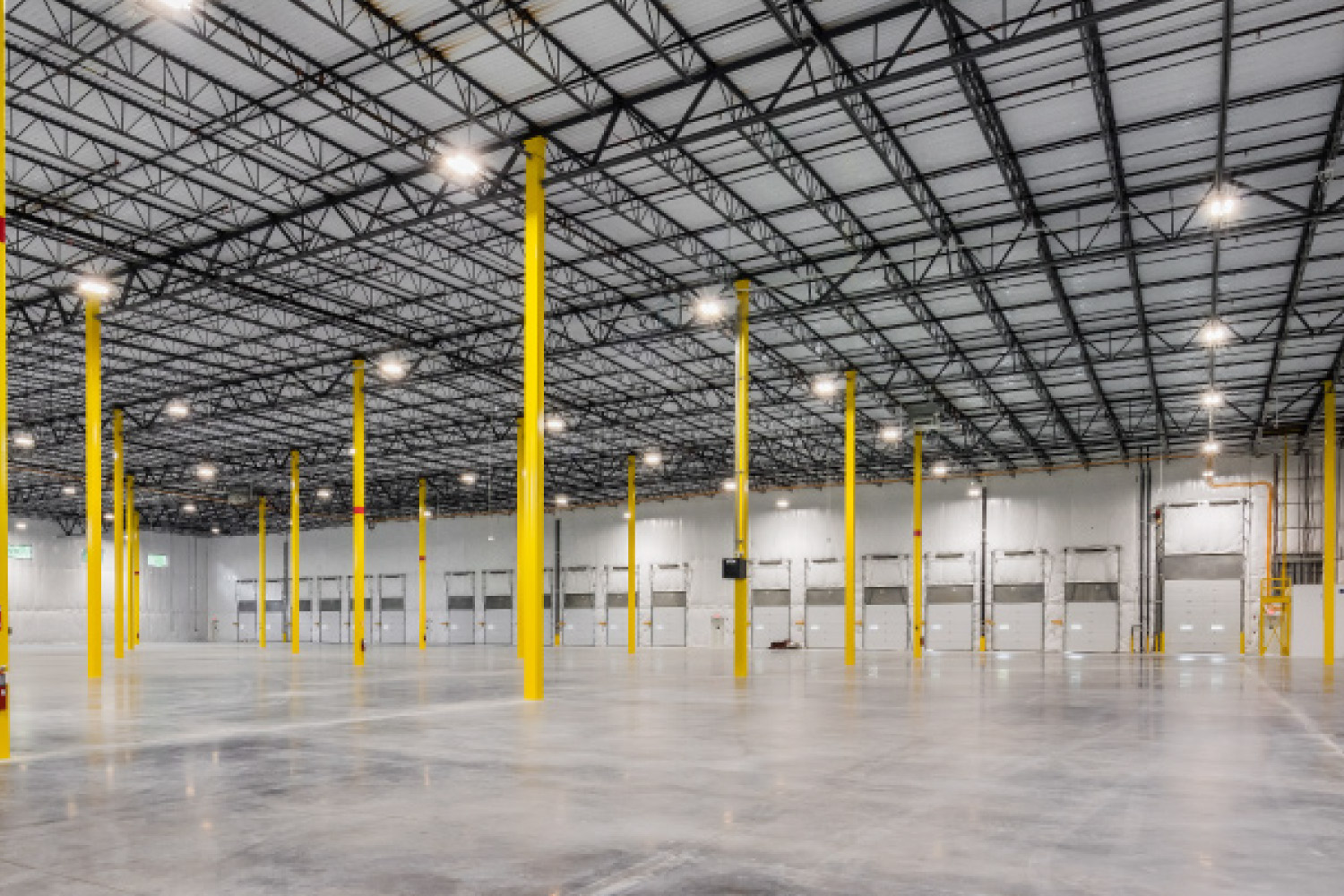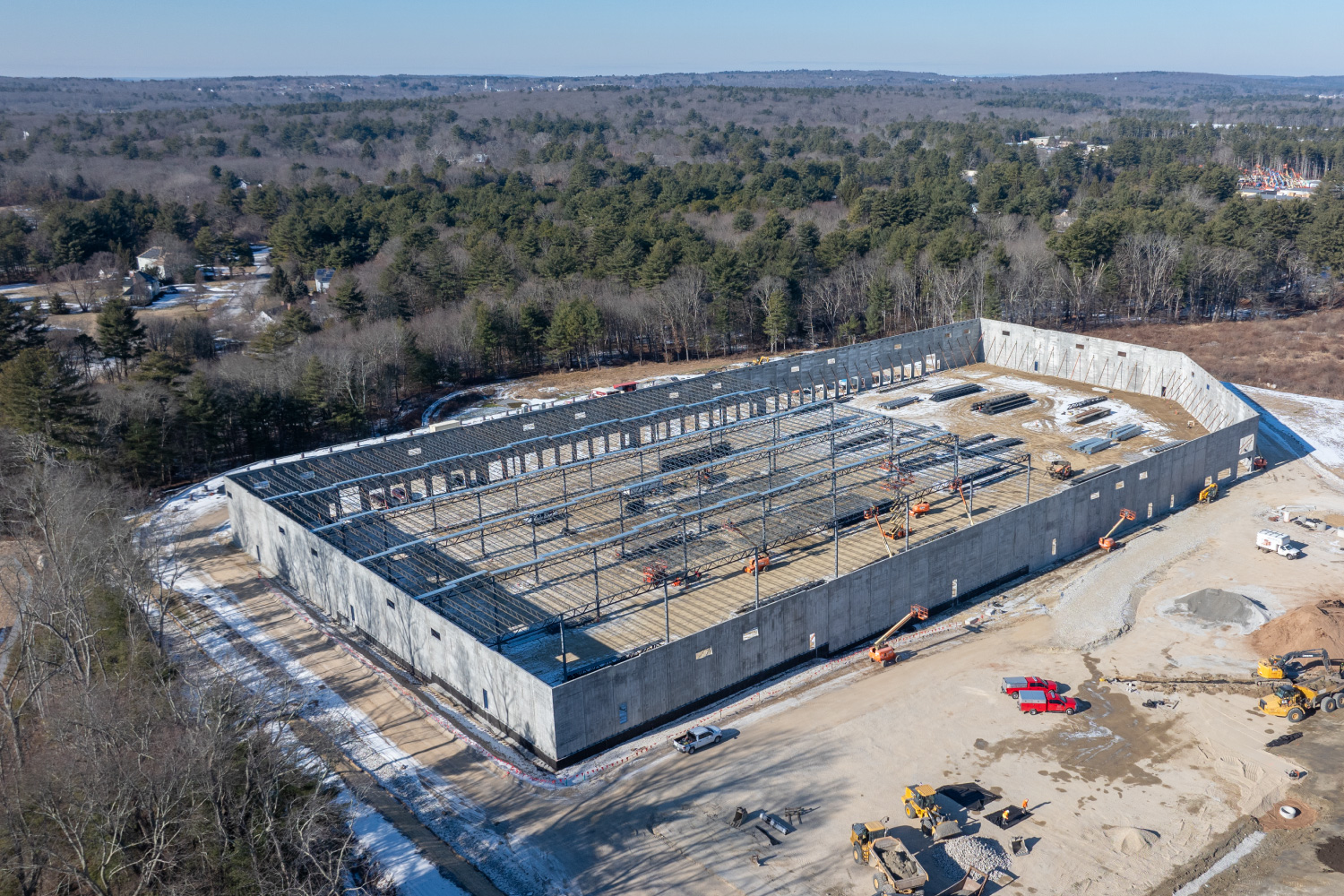Design-build solutions for successful aircraft hangar construction
Backed by decades of experience and millions of square feet of aviation facilities built, ARCO's superior industry expertise has established us as a trusted partner for developers and end-users in the aviation sector nationwide. From aircraft hangars and high-capacity cargo terminals to complex MRO (maintenance, repair, and overhaul) facilities, ARCO understands the specialized requirements of aviation infrastructure. We work closely with clients to ensure the completed facility not only meets stringent FAA, NFPA, and local regulations but also optimizes operational efficiency and supports long-term growth.
Expertise from a leading aviation, aerospace, & aircraft hangar contractor
As one of the nation’s largest design-build general contractors, ARCO is expertly qualified to address the complexities of aviation facility construction. From concept to completion, ARCO is dedicated to understanding our clients’ businesses and delivering a facility that enhances operational performance and supports their unique mission.
From innovative designs for advanced aircraft hangars to large-scale aerospace manufacturing and maintenance facilities, ARCO has the experience and expertise needed to help developers and operators achieve successful aviation and aerospace projects, regardless of complexity or scale.
- Aircraft Hangars
- MRO Facilities
- Training Facilities
- Intermodal Cargo Facilities
GET IN TOUCH.
Ready to kick off your project? We're here to connect and help you get started smoothly.
ARCO Partnering with International Aerospace Coatings on Widebody Hangar
ARCO is partnering with International Aerospace Coatings (IAC) on a 79,920 SF widebody aircraft hangar at Rick Husband Amarillo International Airport. The hangar will accommodate all commercial aircraft types up to a Boeing 777-X. To support IAC's painting operations, the facility will feature hazardous paint mixing and storage rooms, a wastewater treatment room, and a 75-horsepower, oil-free air compressor paired with a 2,000-gallon air receiver tank, with six strategically placed air drops throughout the hangar.
”The ARCO team performed exceptionally well in many areas including pre-construction planning, estimating, design, permitting, scheduling, procurement, quality, safety, closeout, reporting, communications, and maintaining relationships with all project stakeholders.
Tom NeideckerDHL
Design & Construction Solutions for Widebody Aircraft Hangars
When it comes to aviation hangars and MRO facilities, there are many specialized design and construction considerations that must be addressed to ensure a successful project. Understanding aircraft requirements, operational workflows, and regulatory compliance is key to developing a facility that is both functional and cost-effective. ARCO’s industry expertise, combined with our design-build approach, consistently delivers tailored, high-performance solutions that support the long-term success of aviation operations.
HANGAR DESIGN & CONSTRUCTION
Planning and Feasibility Analysis
Effective planning begins with thorough site selection. The location should provide easy access to runways and taxiways, minimizing towing distances and ensuring operational efficiency. Evaluating the site’s topography, soil stability, and potential obstacles such as neighboring structures is crucial. Accessibility for ground transportation, utility connections, and supporting infrastructure must also be considered. Regulatory compliance is another critical factor; all plans must adhere to FAA and ICAO standards.
Environmental impact assessments should address concerns like noise, pollution, and ecological disruption. Coordination with local authorities to meet zoning requirements and secure necessary permits is essential. From a financial perspective, a detailed budget is indispensable. This includes costs for materials, labor, and technology, as well as lifecycle considerations such as maintenance and potential retrofitting. Contingency funds should also be allocated to address unforeseen issues like material shortages or weather delays.
HANGAR DESIGN & CONSTRUCTION
Structural Design
The structural design of a widebody aircraft hangar emphasizes clear-span construction to maximize usable space by eliminating interior columns. Truss systems, rigid frames, or space frames are typically employed to achieve this. The design must account for static and dynamic loads, including aircraft weight, maintenance equipment, and environmental forces such as wind, snow, and seismic activity.
High-strength, lightweight materials like structural steel or aluminum composites are often chosen for their durability and cost-effectiveness, with corrosion-resistant treatments applied for longevity. Prefabricated components can accelerate construction timelines and improve quality control. Doors are a significant aspect of hangar design; they must accommodate widebody aircraft wingspans and tail heights. Automated, energy-efficient doors with insulated panels and weather seals are preferred for their functionality and environmental benefits.
HANGAR DESIGN & CONSTRUCTION
Interior Layout and Space Optimization
The interior layout must prioritize efficiency and flexibility. Adequate space for maneuvering, parking, and staging aircraft is crucial, with considerations for turning radii and wing clearances. Zones should be designated for various operational needs, including storage, refueling, and quick turnarounds. Maintenance workstations need to be conveniently located, with easy access to tools and parts storage. Office spaces, breakrooms, and meeting areas for on-site personnel, as well as restrooms and locker facilities, should be included. Future-proofing is vital in the design phase; this includes planning for scalable expansions, such as additional docking bays or upgraded technology systems. Modular designs can allow for reconfiguration to meet evolving operational demands.
HANGAR DESIGN & CONSTRUCTION
Mechanical, Electrical, and Plumbing Systems (MEP)
Efficient MEP systems are critical to the functionality of a hangar. HVAC systems should use zoned controls to optimize energy use while maintaining comfortable working conditions. Advanced filtration systems are essential to remove fumes and particulates from maintenance activities, and natural ventilation solutions like operable louvers can enhance airflow. Lighting systems should include high-efficiency LEDs with motion sensors to reduce energy consumption, supplemented by skylights or translucent panels for natural daylighting. Drainage systems need to manage fuel, oil, and water runoff effectively, incorporating trench and grate designs. Water reclamation systems can be used to recycle water for non-potable purposes like aircraft washing, ensuring compliance with environmental standards for wastewater treatment.
HANGAR DESIGN & CONSTRUCTION
Safety and Compliance
Safety and compliance are paramount in hangar design. Fire suppression systems must accommodate the size of the hangar and the specific needs of widebody aircraft, with high-expansion foam or water mist systems being common choices. Fire-resistant materials should be used strategically, and clear evacuation plans with well-marked exits are essential. Redundant power supplies ensure critical systems remain operational during emergencies. Security measures should include advanced access control, such as biometric systems or RFID badges, along with CCTV cameras and motion detectors to monitor the premises. These systems should integrate with airport-wide security protocols and cybersecurity measures to protect the facility’s digital infrastructure.
HANGAR DESIGN & CONSTRUCTION
Design-Build Delivery
Partnering with a qualified design-build contractor like ARCO with extensive experience in warehouse design and construction is essential for success. Design-build delivery helps clients navigate strategic design decisions and strategic planning for their facilities. Additionally, unlike traditional delivery methods that treat the phases of design and construction sequentially, the design-build process combines quality of design and construction, management of capital expense, and adherence to schedule all under a single point of responsibility. Preliminary design is completed during the proposal process, and warehouse users benefit now more than ever from the speed at which design-build delivery moves.
Contact Us


